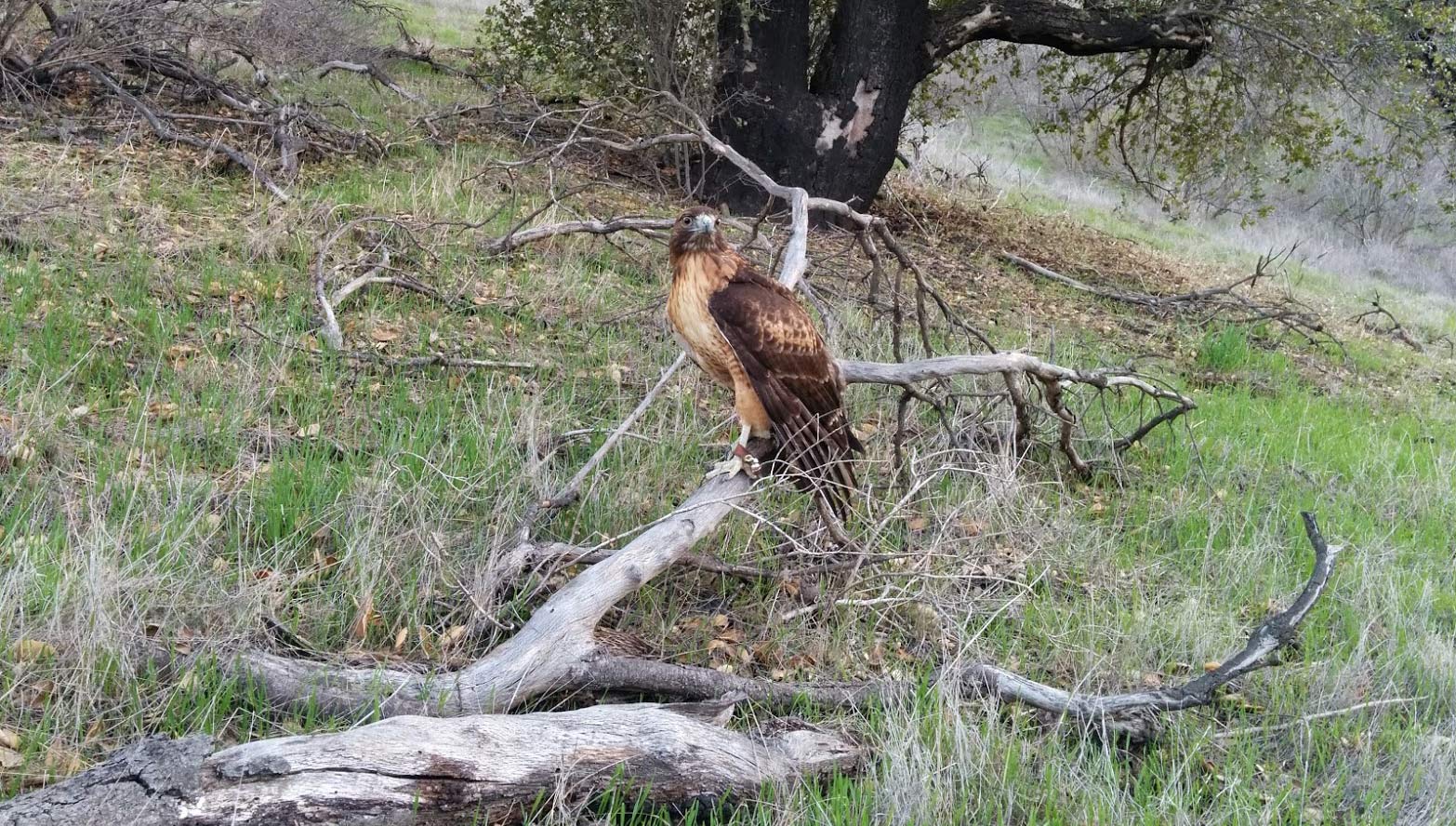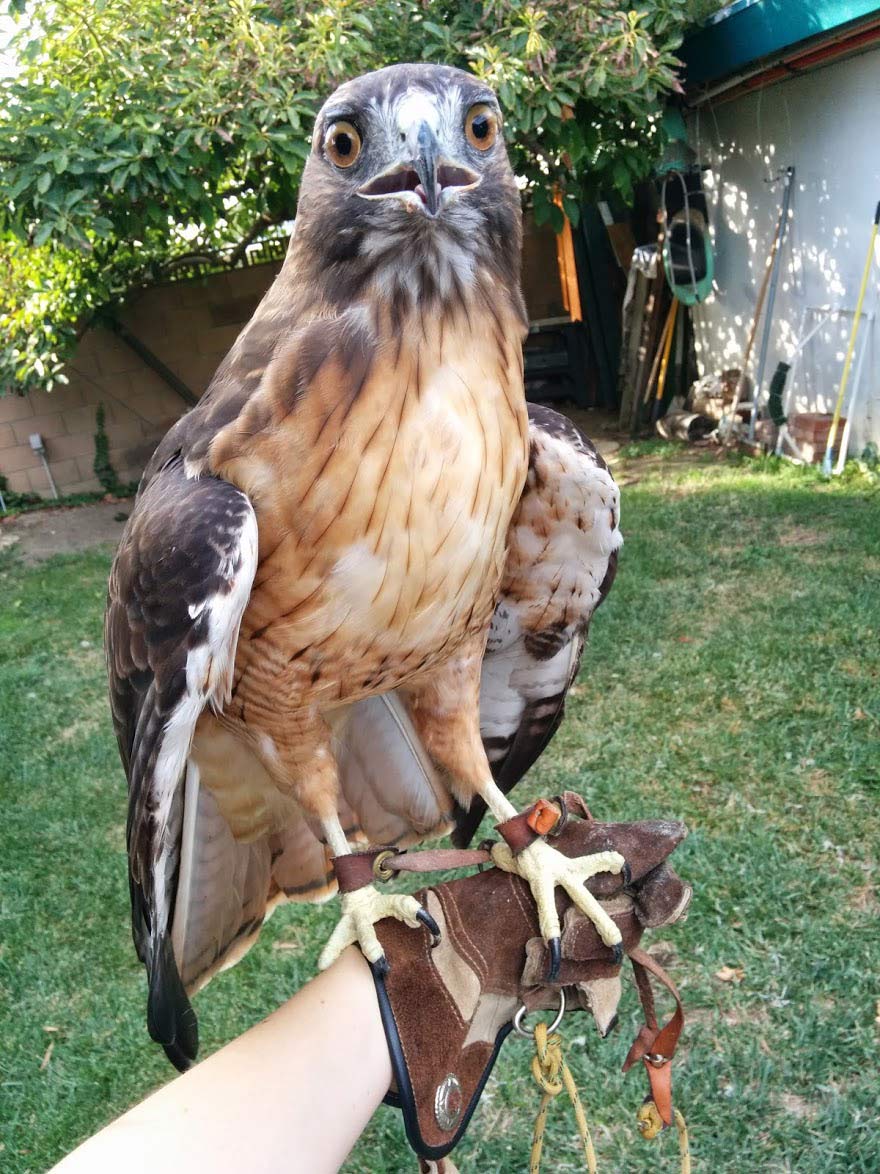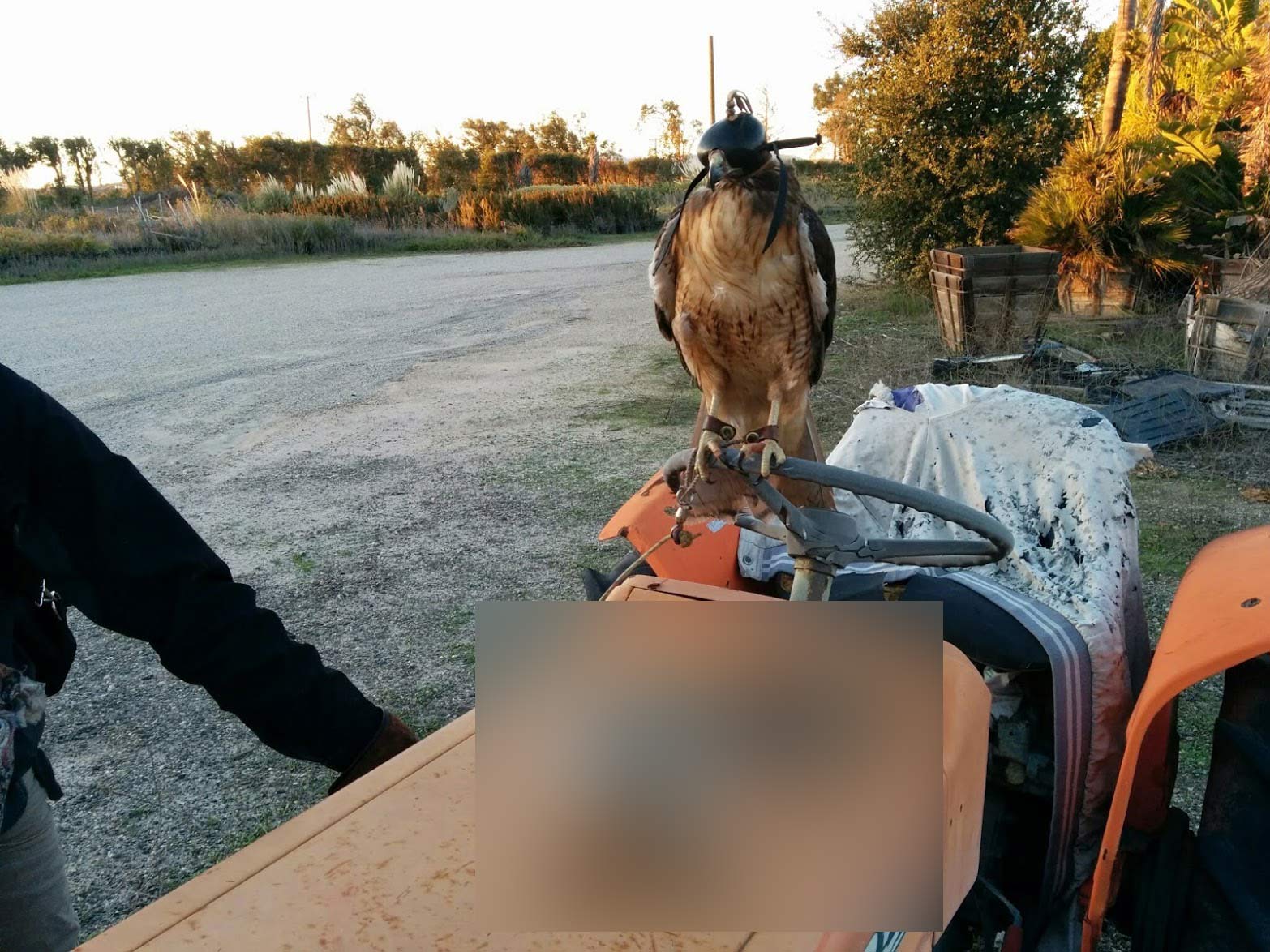
Even though I’m unfortunately taking a break from falconry for one year due to college in another state, I still relive and reminisce on my countless past outings. Here is what a typical day in the life of a falconer is like. My day doesn’t have a horrendously early start, a long travel time, or an expensive bill waiting to greet me at the end. My life is like any other high schooler, at least until around three o’clock. It’s when I get home from school my day really picks up, I walk into the yard and face our custom mews (a mews is a birdhouse designed to house one or more birds of prey) against the far wall.
Sitting on his astroturf-wrapped perches is my beloved male Red-tailed Hawk, Buddy. I remove a thawed Coturnix Quail from the refrigerator in our garage, which is now filled with a growing number of locally-caught cottontail rabbits and a few dozen more quail which we got frozen straight from the same breeders that sell them as feeders to the LA Zoo.
A mews is a birdhouse designed to house one or more birds of prey
I’m in the small room on the patio filled with our supplies. I pick up a hefty but new receiver for his transmitter. The transmitter Buddy wears weighs only seven grams. He wears it around his leg, and it is an essential part of falconry in the modern world. If he gets lost, I can pull out the receiver and track down the transmitter. Thankfully, there have only been a few times when I’ve had to pull out the radio tracker—but better safe than sorry, as they say! That mantra is extremely relevant in the falconry world.
The thawed quail in front of me is quartered, with two breasts, and two legs like a little chicken dinner. I remove the intestines but it’s healthy for them to eat the kidneys, heart, and lungs. The entire head and neck also make for an enticing deal breaker when it’s getting dark and Buddy’s starting to think about spending the night in a eucalyptus tree. Out of the freezer comes another quail, this one frozen mostly solid and tied to a leather pouch full of rice—no, he doesn’t eat the rice—it just gives the bag some weight. This is called the lure. When I swing the lure and he comes to it, he gets to eat as much as he wants. The lure is used to trade the bird off a rabbit or to call in the bird after the hunt is over. Falconry is based 100% on positive reinforcement.
I finish up my time in the work room, the lure and tidbits are in my falconry bag pressed against an ice pack to keep them from spoiling after hours under the Southern Californian sun. The receiver is secure in a padded bag I wear across my back and the transmitter’s battery is in place. I have my thick denim hiking pants and boots on, as well as gaiters to prevent thorns and even rattlesnakes from meeting my skin.
The mews has two doors as you see in many bird enclosures. Not only has this saved me a few times, but it’s also part of the federal regulations for housing birds of prey. In the first room, I put on my leather glove and have his jesses ready. The jesses are two leather strips that go through the holes on the anklets he wears. This keeps him from flying off my fist.
The jesses are two leather strips that go through the holes on the anklets he wears. This keeps him from flying off my fist
With a quail leg gripped tightly in my gloved hand I open the door and am almost immediately greeted by the powerful force of my hawk. He must be hungry and eager today since usually, it takes a bit of coaxing and bribing to get him on the fist. Wearily the jesses slip through the anklets, careful to watch out for him trying to grab or ‘foot’ me with his talons. Luckily today he seems to be much more interested in the meaty leg than my hand. He’s secure now on my fist and we exit the mews’ two doors into the yard. It’s there I take the hood out of my bag. The hood is a small cap or hat he wears that covers his eyes. It immediately calms him down and keeps him from jumping around or being startled by things. Now that he’s hooded and jessed up, we’re ready to go!
The back of the hooded truck opens, and a mass of dust seems to have rested on it. Buddy is placed inside on his small astroturf perch and his jesses, which are attached to a thin, light leash, are fastened to the perch. I put my bag and transmitter in the back seat, checking off a mental list to make sure I got everything: hat, walking stick, water bottle, phone, wallet…everything seems to be in place and we set off for the nearby rural hills.

We fly in a lot of places most people overlook half-developed homes at the bases of slightly-sloping hills, seemingly hidden fields between golf courses and orchards. Rabbits like to live in places with debris like old wooden crates and under abandoned industrial dumps.
Today, we’re on a stretch of land between a deserted park and a golf course. There is a gully full of brush, a few rolling, golden hills, and a line of tall but well-spaced trees. A couple of wooden panels dot the dry grassy area. It’s rabbit heaven, more so than a garden full of lettuce and carrots that people tend to imagine. But it’s also hawk heaven, the tall trees give us a great advantage in hunting here. There’s also a perfect breeze, the Santa Ana winds which Buddy uses to “slope soar.”
From the truck he is pulled, his hood is removed, and his golden eyes soon recognize the area since we’ve hunted here successfully many times before. The transmitter is turned on and attached with a leather strip around his ankle. The first thing I do is remove his jesses and release him into a nearby tree.
This first tree is hardly 30 feet away, and while he familiarizes himself with the area I pull on my bag and grab my walking stick. We’re all set now. I have the receiver across my back and can already feel the weight of it. Sure, it’s a pain to carry but once again, better safe than sorry.
I’m beating the brush alongside the top of the gully, hoping to catch a cottontail rabbit off-guard and send it scurrying into the open. Buddy is perched above me, following me from tree to tree as I make my way underneath him. He watches the area around me closely, but also scans the surrounding hills looking for a rabbit trying to make an early escape. Sometimes he leaves the trees, and in the right wind, soars directly above me getting ready to strike at any moment.

We progress along the strip of land unsuccessfully until I hear a rustling in the brush a few feet in front of me. I’ve found it common to hear rabbits before you see them, yet I guarantee it’s the other way around for my bird. Within seconds after hearing the noise, sure enough, a furry blur goes darting out in front of me. Immediately my bird follows, his wings are tucked in tight, and he’s a little jet on a search-and-destroy mission.
The collision happens on the other side of the slight hill so I don’t see the hit. I climb over the top, look down, and, as I expected, I see Buddy holding onto the rabbit. It’s all very still. Buddy is panting and keeps looking around to make sure no other predators will come to steal his prey. As I approach, his instinct says to hide from me especially when he has a kill. But a few years of companionship and he knows I’m there to help. Though sometimes, his urges overcome him and he drags the rabbit deep into the brush.
Today, lucky for me, he sits still with his golden brown wings spread and the feathers on the back of his head erect, looking like a dragon. He is one, to me at least. The rabbit is immediately dispatched, respecting the prey is an extremely important thing to falconers. The first thing I ever do when my bird makes a connection with prey is give it a quick death. Without me there, he could’ve kept the poor rabbit alive for hours. So my being there makes it a lot easier for all of us.

Sometimes the hunts are quick, and sometimes we are out there for hours without even a single sighting. A great hunt is one like I just described, but every day is a good day in Falconry when you come back with your bird. There are lots of things that could go wrong like electrocution from telephone pulls, people with guns thinking a hawk is a good practice target, and another bird attacking yours.
It’s important to stay alert and always thankful for the days you and your bird are together. Even if he frustrates you or foots you, it’s a million times better than losing this companion. The companionship between Falconer and Raptor has no mutual love, no affection, nothing like that. It’s purely based on the raptor’s desire to hunt, and when he sees you as a viable helper that’s when the connection begins.
He could choose to leave me any day, all he has to do is fly away. But he knows I’m there with food and a good chance of scaring up rabbits so he stays. And because of that, I’m truly a lucky falconer.
